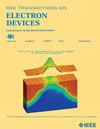用BEOL效应管解决3-D CMOS + X成像机的连接瓶颈
IF 2.9
2区 工程技术
Q2 ENGINEERING, ELECTRICAL & ELECTRONIC
引用次数: 0
摘要
与传统的数字计算机相比,伊辛机器的最新进展为解决计算密集型问题提供了一个令人兴奋的新范例,具有卓越的能源效率和速度。尽管有这些有希望的发展,但许多现实世界的问题需要高连接性,这一要求超出了当前基于cmos的Ising机器硬件的能力。为了克服这种连接瓶颈,我们提出了一种利用可编程的多位后端线(BEOL)铁电场效应晶体管(fefet)的新方法,该方法能够单片三维堆叠。我们实验展示了一个使用双门控BEOL效应管的10节点,24耦合的Ising机器。该平台实现了实时可重构性,并支持多种计算工作负载,包括组合优化问题和基于能量的学习。即使在高达100亿次读写周期的高耐久条件下,我们的平台也能以最小的精度降低鲁棒的容错计算。这种弹性对于读密集型正向问题和写密集型反向问题或学习问题都是至关重要的。为了评估性能和面积增益,我们将提出的基于fet的架构与传统的CMOS实现进行了基准测试。结果显示了FeFET技术的显著优势,包括耦合密度增加8.2倍,能效提高11倍,延迟减少2.1倍。本文章由计算机程序翻译,如有差异,请以英文原文为准。
Addressing the Connectivity Bottleneck With BEOL FeFETs for 3-D CMOS + X Ising Machines
Recent advancements in Ising machines present an exciting new paradigm for addressing computationally intensive problems with superior energy efficiency and speed compared to conventional digital computers. Despite these promising developments, many real-world problems demand high connectivity, a requirement that exceeds the capabilities of current CMOS-based Ising machine hardware. To overcome this connectivity bottleneck, we propose a novel approach leveraging programmable multibit back-end-of-line (BEOL) ferroelectric field-effect transistor (FeFETs) capable of monolithic 3-D stacking. We experimentally demonstrate a 10-node, 24-coupling Ising machine utilizing dual-gated BEOL FeFETs. This platform enables real-time reconfigurability and supports diverse computational workloads, including combinatorial optimization problems and energy-based learning. Our platform demonstrates robust error-resilient computation with minimal accuracy degradation, even under high endurance conditions of up to 10 billion read and write cycles. This resilience is critical for both read-intensive forward problems and write-intensive inverse or learning problems. To evaluate the performance and area gains, we benchmark the proposed FeFET-based architecture against traditional CMOS implementations. The results reveal significant advantages for FeFET technology, including an $8.2\times $ increase in coupling density, an $11\times $ improvement in energy efficiency, and a $2.1\times $ reduction in latency.
求助全文
通过发布文献求助,成功后即可免费获取论文全文。
去求助
来源期刊

IEEE Transactions on Electron Devices
工程技术-工程:电子与电气
CiteScore
5.80
自引率
16.10%
发文量
937
审稿时长
3.8 months
期刊介绍:
IEEE Transactions on Electron Devices publishes original and significant contributions relating to the theory, modeling, design, performance and reliability of electron and ion integrated circuit devices and interconnects, involving insulators, metals, organic materials, micro-plasmas, semiconductors, quantum-effect structures, vacuum devices, and emerging materials with applications in bioelectronics, biomedical electronics, computation, communications, displays, microelectromechanics, imaging, micro-actuators, nanoelectronics, optoelectronics, photovoltaics, power ICs and micro-sensors. Tutorial and review papers on these subjects are also published and occasional special issues appear to present a collection of papers which treat particular areas in more depth and breadth.
 求助内容:
求助内容: 应助结果提醒方式:
应助结果提醒方式:


